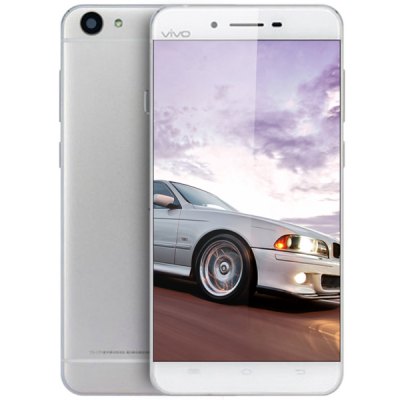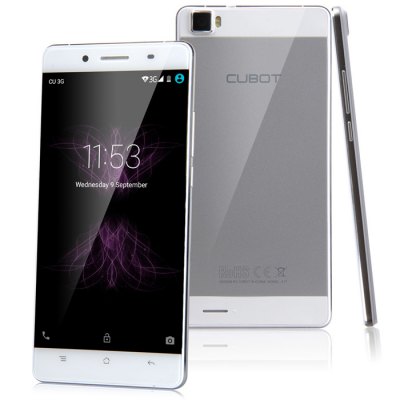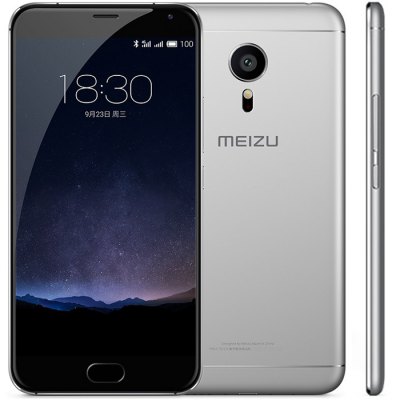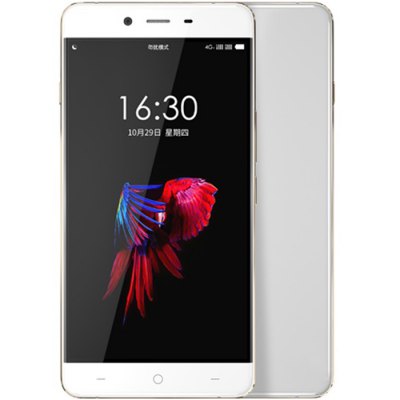The Chinese are the Chinese: like Asian manufacturers have moved away from the production of "clones" Apple and Samsung
Until 2015, Chinese manufacturers actively adopted the style of two recognized leaders in the smartphone market - Apple and Samsung. And the first one "got" more often and stronger: almost every self-respecting company from the Middle Kingdom considered it their duty to steal at least some design element of the current iPhone model. Samsung, however, also often suffered from fans to honestly borrow both design elements and the exterior of a Korean device as a whole. In the past year, the situation has changed - albeit not radically, but still noticeably. Now, young and hot Chinese manufacturers are looking for inspiration not only in the products of Korean and American manufacturers, but also in the products of their own competing colleagues - Chinese companies.
Yes, of course, there are exceptions - say, Vivo X6

. If you look at the back of this device, it becomes clear that its creators were inspired by the iPhone 6s (well, or iPhone 6) and only them. How many copies were broken when discussing these “terrible plastic strips” ... they were left in X6. It seems, not because the antennas are hidden under them, but simply for the sake of similarity.

Vivo X6
If Vivo can afford to copy the iPhone, then the design of Vivo itself is inspired by smaller companies. So, Cubot X17 , announced at the end of 2015, resembles the Vivo X5M introduced in May.
The Meizu company, which at one time was known as a great specialist in cloning iPhones of all stripes, managed to find its own style and somehow deviate from the formula "take an iPhone, circle and get our own novelty." And now Meizu products themselves act as role models: for example, the features of Meizu Pro 5 can be traced in Xiaomi's first metal device - Redmi Note 3 . It is slightly smaller (5.5 inches versus 5.7), there are also differences in hardware, however, this does not change anything - when creating the “troika” Xiaomi clearly focused on Meizu Pro 5.
Huawei, due to its scale and a strong desire to enter the US market (which will happen, according to rumors, in 2016), has not been copying other people's products for a long time - in the United States, such attempts are not encouraged and may be called to speak to the judicial authorities for them. Therefore, the Ascend Mate 7 phablet , like most other Huawei products of the latest generation, turned out to be quite authentic. True, the model did not become one-of-a-kind in terms of design: Landvo, which released the L600S smartphone , which resembles the Ascend Mate 7 in appearance, took the lead . True, being performed not in the 6-inch, but in the 5-inch form factor.
Finally, it is worth recalling a couple of OnePus X and Leagoo Elite 1 . The last device was released a little earlier, the first - a little later. The design concept for these smartphones is the same: the front and back are absolutely smooth, and in the middle of this “sandwich” is a metal frame. Such a design looks very nice, and it is believed that it will become the standard for most Chinese middle-class smartphones for a couple of years. And who invented it ... But who will now sort it out. I’m not much mistaken if I say that Sony in its Xperia Z is a shaggy year. But now - on the verge of 2015 and 2016 - this version of the design of smartphones is perceived as true Chinese.
Let's see in what direction the design of Chinese smartphones will develop next year. Given all of the above, there is hope that sooner or later, manufacturers from the Middle Kingdom will come to the creation of something authentic. And that would be great: no matter how beautiful the new “iPhones” and “Galaxies” may be, in order to gain a place in the bright future, it is worth taking care not to copy, but to create something of your own. Even if (at first) and with elements borrowed from market neighbors. After all, their borrowed elements are much easier to get rid of over time than the design completely copied from the Americans and Koreans.

. If you look at the back of this device, it becomes clear that its creators were inspired by the iPhone 6s (well, or iPhone 6) and only them. How many copies were broken when discussing these “terrible plastic strips” ... they were left in X6. It seems, not because the antennas are hidden under them, but simply for the sake of similarity.

Vivo X6
If Vivo can afford to copy the iPhone, then the design of Vivo itself is inspired by smaller companies. So, Cubot X17 , announced at the end of 2015, resembles the Vivo X5M introduced in May.
 Cubot x17 |  Vivo X5M |
The Meizu company, which at one time was known as a great specialist in cloning iPhones of all stripes, managed to find its own style and somehow deviate from the formula "take an iPhone, circle and get our own novelty." And now Meizu products themselves act as role models: for example, the features of Meizu Pro 5 can be traced in Xiaomi's first metal device - Redmi Note 3 . It is slightly smaller (5.5 inches versus 5.7), there are also differences in hardware, however, this does not change anything - when creating the “troika” Xiaomi clearly focused on Meizu Pro 5.
 Meizu Pro 5 |  Xiaomi Redmi Note 3 |
Huawei, due to its scale and a strong desire to enter the US market (which will happen, according to rumors, in 2016), has not been copying other people's products for a long time - in the United States, such attempts are not encouraged and may be called to speak to the judicial authorities for them. Therefore, the Ascend Mate 7 phablet , like most other Huawei products of the latest generation, turned out to be quite authentic. True, the model did not become one-of-a-kind in terms of design: Landvo, which released the L600S smartphone , which resembles the Ascend Mate 7 in appearance, took the lead . True, being performed not in the 6-inch, but in the 5-inch form factor.
 Huawei Ascend Mate 7 |  Landvo L600S |
Finally, it is worth recalling a couple of OnePus X and Leagoo Elite 1 . The last device was released a little earlier, the first - a little later. The design concept for these smartphones is the same: the front and back are absolutely smooth, and in the middle of this “sandwich” is a metal frame. Such a design looks very nice, and it is believed that it will become the standard for most Chinese middle-class smartphones for a couple of years. And who invented it ... But who will now sort it out. I’m not much mistaken if I say that Sony in its Xperia Z is a shaggy year. But now - on the verge of 2015 and 2016 - this version of the design of smartphones is perceived as true Chinese.
 Onepus x |  Leagoo Elite 1 |
Let's see in what direction the design of Chinese smartphones will develop next year. Given all of the above, there is hope that sooner or later, manufacturers from the Middle Kingdom will come to the creation of something authentic. And that would be great: no matter how beautiful the new “iPhones” and “Galaxies” may be, in order to gain a place in the bright future, it is worth taking care not to copy, but to create something of your own. Even if (at first) and with elements borrowed from market neighbors. After all, their borrowed elements are much easier to get rid of over time than the design completely copied from the Americans and Koreans.
